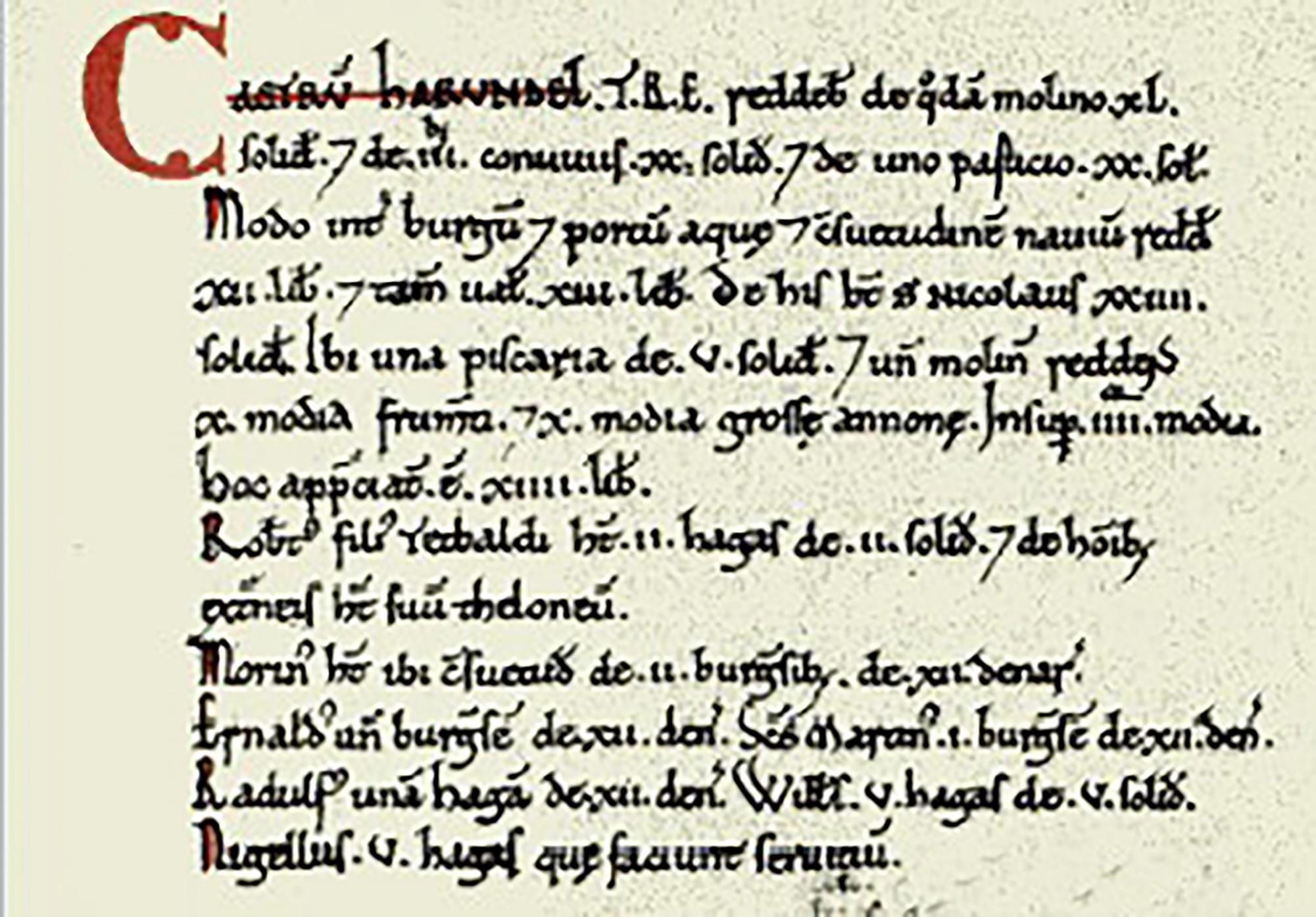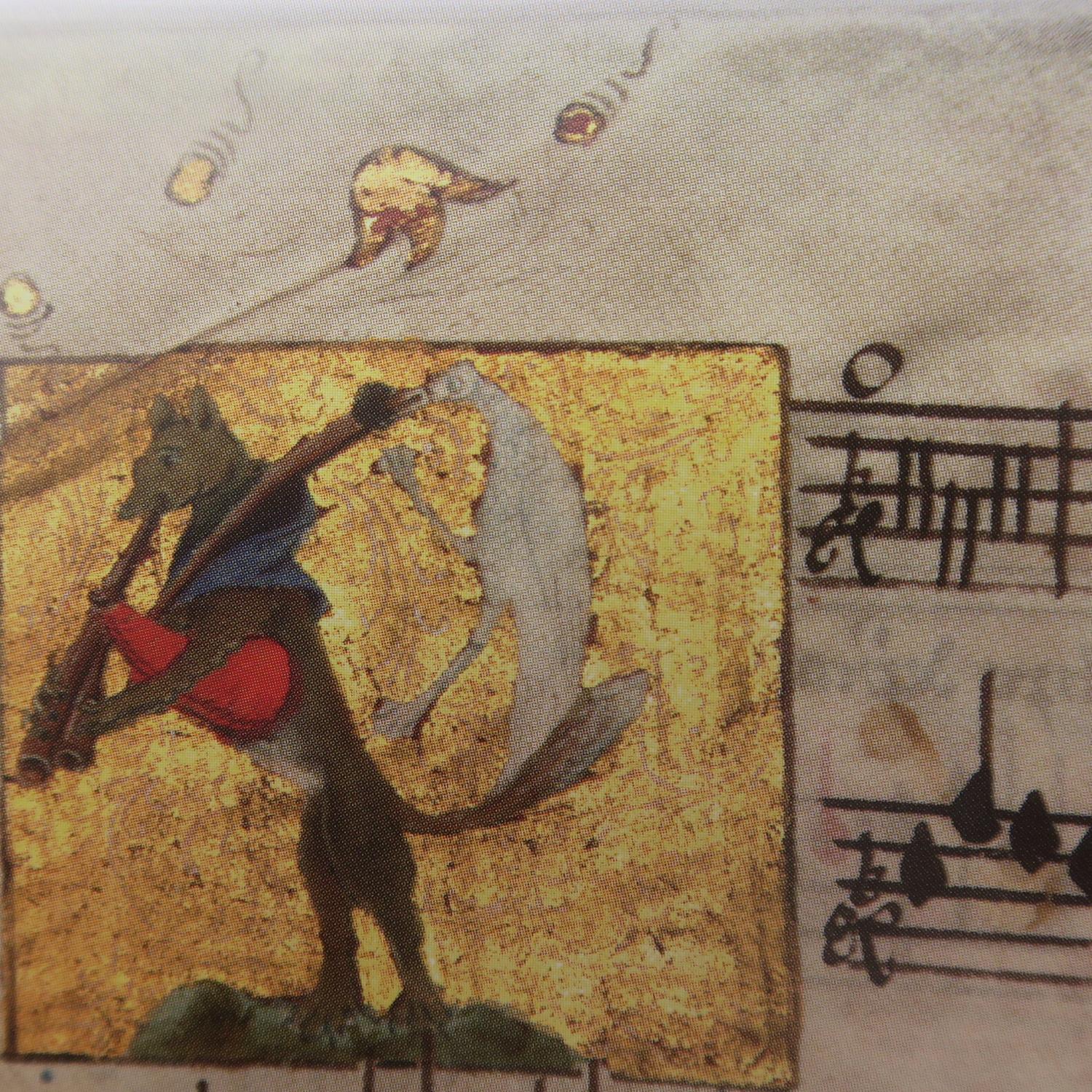
3 minute read
A Pilgrimage Through Time - St Nicholas Heritage Exhibition
By Oliver Hawkins
St Nicholas Heritage Exhibition
Advertisement
Arundel entry in the Domesday book
Those of us who have been wondering what plans St Nicholas has for the raised area at the front of the church, recently cleared of scrub, will be intrigued to hear of an exhibition set to coincide with the Cathedral’s Carpet of Flowers. ‘A Pilgrimage Through Time’ will run from Saturday 11 June to the following Sunday. It will take place in the church itself and in a marquee in what is now called the Parish Garden at the front, accessible via a gentle ramp along the side. The exhibition aims to take the visitor through from the early years of the church, beginning with the relevant entry in the Domesday Book, illustrated above, through its busy medieval period, on to the Reformation and later to the present day.
The church itself of course provides the most significant evidence of the many centuries of worship at St Nicholas – the beautiful English Perpendicular Gothic architecture, quite possibly the work of Henry Yevele, the leading architect of late fourteenth century England, but also the wall paintings and the scratched stonemasons’ marks, reminding us that this was all achieved by individual craftsmen, working with the simplest hand-tools, ropes and levers. The enormous iron grille separating the parish church from the Earls’ chantry chapel must have represented a remarkable technological tour-de-force, underlining the status of Sussex as the centre of the medieval iron-working industry.

Detail from the 1525 Arundel Choirbook, the original of which is in the Lambeth Palace Library

Detail from the 1525 Arundel Choirbook
The marquee will house a chronological series of displays, giving background information about the church, and its place in the life of the town. Following the Reformation the parish church lost its close association with the castle, although for a period in the mid-nineteenth century the XIII Duke took to worshipping at St Nicholas, to which he presented its set of eight bells. Despite his Catholic upbringing the Duke had been infuriated by the re-establishment of the Catholic Hierarchy in England, which he regarded as foreign interference and likely to provoke anticatholic feelings. When he complained to Queen Victoria about it she reassured him, saying that she was much more concerned about the Puseyites, but the Duke remained unconvinced! The building of what is now the Cathedral, by the Duke’s grandson Henry, ‘Our Little Duke’, prompted the churchwardens of St Nicholas to undertake a major refurbishment of the church, and led to the famous ‘dispute’ concerning access to the Fitzalan Chapel. Neither the vicar nor the Duke, both strong-willed young men in their twenties, were prepared to give way, and the case was eventually settled in the High Court, with Lord Justice Coleridge finding
Victoria about it she reassured him, saying that she was much more concerned about the Puseyites, but the Duke remained
churchwardens of St Nicholas to undertake a major refurbishment of the church, and led to the famous ‘dispute’ concerning access to the Fitzalan Chapel. Neither the vicar nor the Duke, both strong-willed young men in their twenties, were prepared to give way, and the case was eventually settled in the High Court, with Lord Justice Coleridge finding in favour of his Grace. Lord Coleridge did express the hope that public access to the Chapel might be made available, and at the time of writing the exhibition organisers are hoping that some kind of opening of the grille will be allowed. Access to the exhibition will be free, and a number of associated talks and other events will be taking place during the week.











